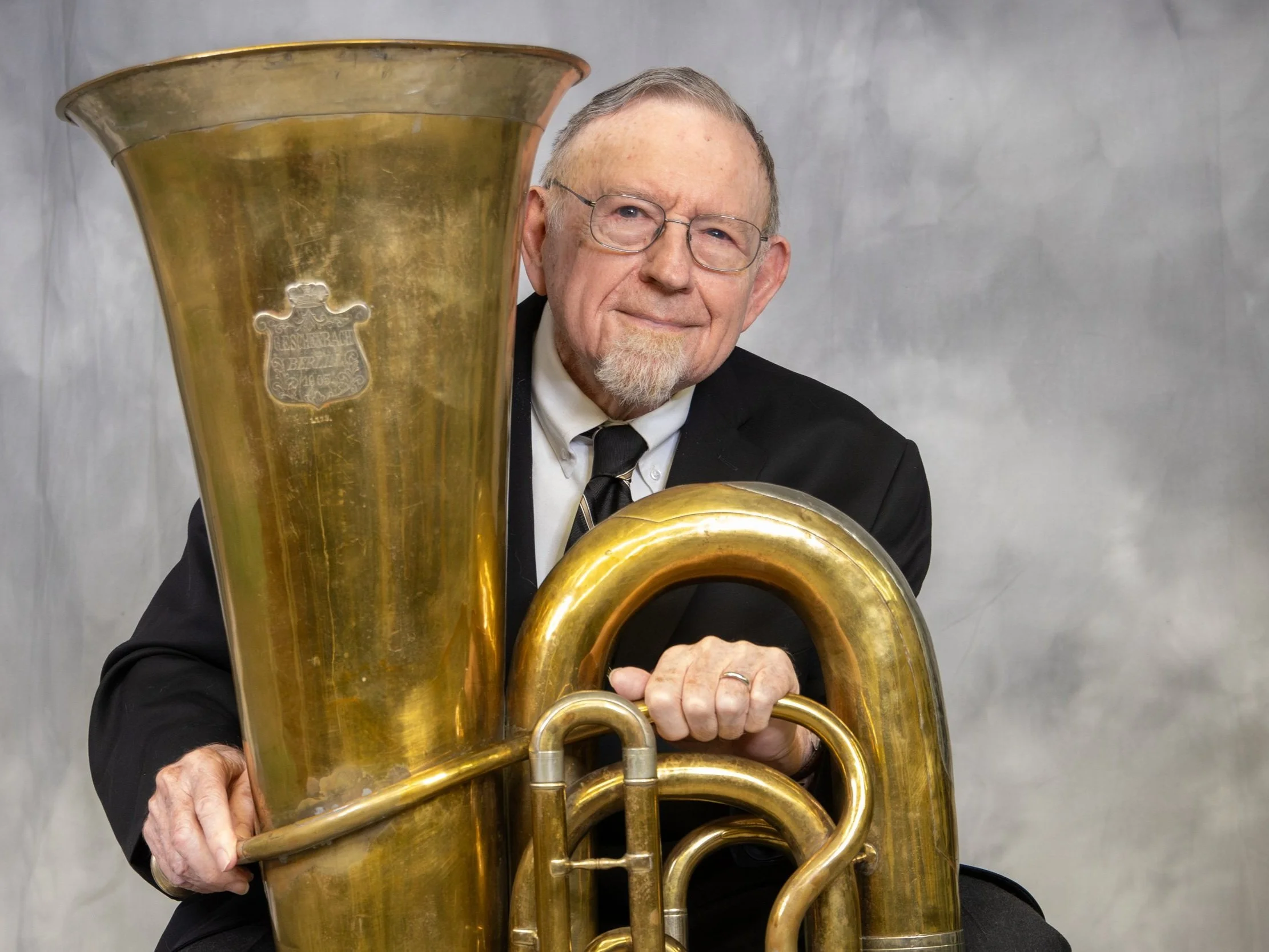History Corner
HISTORY CORNER
by John Beery
Joe Maddy and orchestra at the National Music Camp, c. 1942.
“It is generally admitted the National Music Camp is the single greatest adventure in the development of musical culture in this country.”
Taken from the Congressional Record, July 18, 1942, this statement by Michigan's Senator Arthur Vandenberg might appear overblown now. American culture today is dominant enough in the world that we may forget it was not always so. It was not so when Joseph Maddy, T. P. Giddings, and others launched the great enterprise we now call Interlochen Center for the Arts.
Vladimir Bakaleinikoff with Lorin Maazel at the National Music Camp in 1938 or 1939. The 1939 Camp Scherzo described Maazel, then age nine, as “probably the youngest person in the United States to conduct a symphony orchestra.” A student of Bakaleinikoff, Maazel had conducted the National High School Orchestra for the first time in 1938.
In the first decade of its existence, the National Music Camp was already a true artistic melting pot. The early faculty included many musicians schooled in Europe. Emil Heermann, for example, was the son of a famous German musician whose circle of friends included Brahms, Grieg, and Saint-Saëns. Gustave Langenus was born in Belgium, played clarinet in the New York Philharmonic, and wrote clarinet methods which became standard teaching materials throughout America. Vladimir Bakaleinikoff graduated from the Imperial conservatory in Moscow, Russia, and became the first Professor of Viola at the Saint Petersburg Conservatory in c. 1914.
This generation of European musicians brought high artistic standards, musical tradition, and discipline to the north woods. It was here that a new generation of American musicians would encounter the likes of Bakaleinikoff, Stolarevsky, Carl Busch, Andre Andraud, Frank Tishy, and many others. This notable assembly would change music and all the arts in a revolutionary way.
Danish-born composer Carl Busch, seen in one of the first years of Camp, wearing his badge. His “Interlochen Camp March” of 1929 was dedicated “To the Camp Dwellers at Interlochen, Mich.”
At Interlochen in the 1930s, music was the focus. While the great European masters were represented well on concert programs, Joseph Maddy and the National High School Orchestra were performing music by such contemporaries as Percy Grainger, Howard Hanson, Carl Busch, Edgar Stillman Kelley, and William Skeat. The National High School Band performed works by Sousa, Goldman, Grainger, and Cowell. It was common for the composers to conduct their own works.
This multi-cultural atmosphere was clearly stimulating to faculty, staff, and students. Guests were likewise influenced by the intensity of effort and the productivity of the young artists. Frederick Stock, conductor of the Chicago Symphony Orchestra, was so impressed after a visit that he wrote, “You should be proud and well content that you have achieved at Interlochen something so unique and promising for the future of music in America, and America in music, something that will be recorded in the annals of the cultural life of the United States as epoch-making and enduring.”
Joe Maddy welcomed John Philip Sousa to the Interlochen Bowl in 1931, the year that Sousa’s “The Northern Pines” was dedicated to Camp.
It was the future of music in America that concerned Joseph Maddy. He knew music held great power to shape the lives of young people and he wanted to use that power on every possible young person. Building character was as important as anything he did at Interlochen. Standing beside him in that effort was the man often called “old stone face” or the “demon of discipline,” T. P. Giddings. But it was the power of music and the goals established by Maddy and his faculty and staff that began to change America in the late 1930s. Then came World War II, and the world changed.
Frederick Stock conducted the National High School Orchestra on August 11, 1940. The Scherzo for that year described him as an “advocate of all that is good in music.” The following month he wrote to Joe Maddy of his admiration for Interlochen.
In the 1943 summer session bulletin, an unidentified author stated: “When peace comes, the world will look to America for cultural leadership. European traditions, upon which our musical culture has been built, will give way to a musical culture all our own. American composers, schooled in European traditions, cannot be expected to create music of truly American flavor.”
“The beginnings of this new musical culture have been made; several of the pioneers in this field will be on the faculty at Interlochen during the 1943 season. Percy Grainger, Ferde Grofé, and George Frederick McKay will spend the entire season at the National Music Camp.”
Thaddeus P. Giddings and Joseph E. Maddy, co-founders of the Interlochen educational enterprise. Their book, Instrumental Techniques for Orchestra and Band, represented a new approach to education.
The unidentified author was quite certainly Joseph Maddy; a man who was always thinking about the future. He was also preparing for the future world leadership we would have to assume.
His judgement was on target. American culture has been deeply influenced by Interlochen personalities. Those early years produced such musical giants as Frederick Fennell and Lorin Maazel.
Countless other vitally important artists and educators have been shaped by the Interlochen experience. Equally important are the thousands of alumni whose careers lie outside the arts, but whose lives were changed by the focus on the spiritual qualities expressed through the arts.
John Beery, Curator Emeritus of The Greenleaf Collection, was Associate Professor of Music at Manchester College and is currently in his fifth decade of stewardship of The Greenleaf Collection.
National Music Camp conductors in 1943: Welke, Ferde Grofé, Joe Maddy, Harrison, George Frederick McKay, Percy Grainger, and Maynard Klein. Photo by Eck Stanger, Copyright, 1943, Ann Arbor News, courtesy of the Ann Arbor District Library Archives.
Historical photos copyright ARTICA - The Archives of Interlochen Center for the Arts; used by permission.








